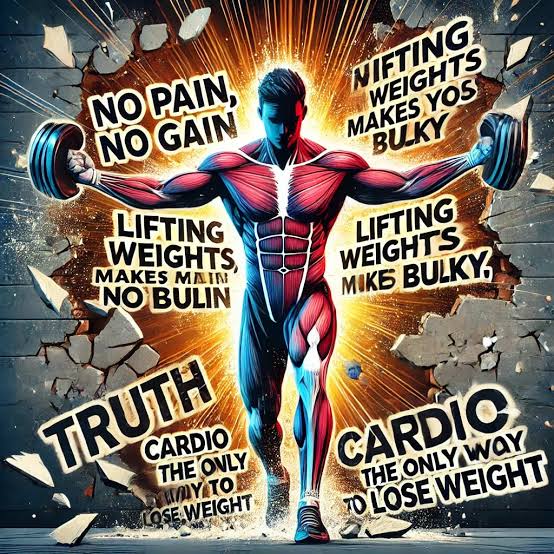When it comes to fitness, misinformation is everywhere. From quick-fix diet trends to confusing workout advice, it’s no wonder many people feel overwhelmed or discouraged. Unfortunately, believing in common fitness myths can not only slow down your progress but also put your health at risk.
Let’s clear the air and debunk some of the most pervasive fitness myths to help you focus on what truly works for your health and fitness journey.
Myth 1: You Can Spot-Reduce Fat
Many people believe that targeting a specific area with exercises like crunches or thigh lifts will reduce fat in that region. Unfortunately, spot reduction is a myth. When you lose fat, your body decides where it comes off first based on genetics, not your workout focus.
What Actually Works: Combine a balanced diet with full-body strength training and cardio. Over time, consistent effort will help reduce overall body fat, including those stubborn areas.
Myth 2: No Pain, No Gain
The idea that workouts must be gruelling and leave you sore to be effective is a common misconception. While it’s normal to feel some discomfort when trying new exercises, pain isn’t a measure of success.
What Actually Works: Focus on progress, not punishment. A good workout challenges you without causing injury. Rest and recovery are just as important as the workouts themselves for achieving long-term results.
Myth 3: Cardio is the Best Way to Lose Weight
While cardio is an excellent way to burn calories, relying solely on it for weight loss may not be the most effective approach. Strength training often gets overlooked but is equally, if not more, important.
What Actually Works: A combination of cardio and strength training is ideal. Strength training helps build muscle, which increases your resting metabolism, making it easier to burn calories even when you’re not working out.
Myth 4: Lifting Weights Will Make You Bulky
Many people, especially women, avoid weightlifting out of fear of becoming too muscular. However, building significant muscle mass requires a combination of heavy lifting, high-calorie diets, and specific training, which most casual gym-goers don’t follow.
What Actually Works: Incorporate weightlifting into your routine to build strength, improve bone density, and enhance overall fitness. It can also help you achieve a toned and lean physique.
Myth 5: You Must Work Out Every Day

While consistency is key, exercising every single day without rest can lead to burnout, injuries, and decreased performance. Your body needs time to recover and repair.
What Actually Works: Aim for at least 3–5 workout sessions per week, incorporating rest days to allow your muscles to recover. On rest days, focus on light activities like walking, stretching, or yoga to stay active without overexertion.
Myth 6: Eating Less is the Best Way to Lose Weight
Extreme calorie restriction might lead to quick weight loss, but it’s not sustainable and can harm your metabolism. Under-eating can also lead to fatigue, nutrient deficiencies, and a higher likelihood of regaining the lost weight.
What Actually Works: Focus on eating nutrient-dense foods in appropriate portions. A balanced diet that includes lean protein, healthy fats, whole grains, and vegetables fuels your body and supports sustainable weight loss.
Myth 7: Supplements are Necessary for Results
From protein powders to fat burners, the supplement industry thrives on convincing people they need products to achieve their fitness goals. While some supplements can be helpful, they’re not a substitute for a balanced diet.
What Actually Works: Whole foods should be your primary source of nutrients. Supplements can be beneficial if you have specific deficiencies or goals but consult with a healthcare professional before adding them to your routine.
Why Understanding Fitness Myths Matters
Believing in myths can lead to wasted time, frustration, or even harm. When you understand the facts, you can make informed decisions and create a fitness plan that works for your unique needs and goals.Remember, fitness is not about quick fixes or shortcuts. It’s a journey that requires patience, consistency, and a willingness to adapt as you learn what works best for your body.
Final Thoughts
The world of fitness can be overwhelming, but separating fact from fiction is the first step toward achieving your goals. Avoid falling for flashy promises or trends that sound too good to be true. Instead, focus on building sustainable habits and listening to your body.By staying informed and prioritising long-term health, you’ll be well on your way to success—no myths required.


